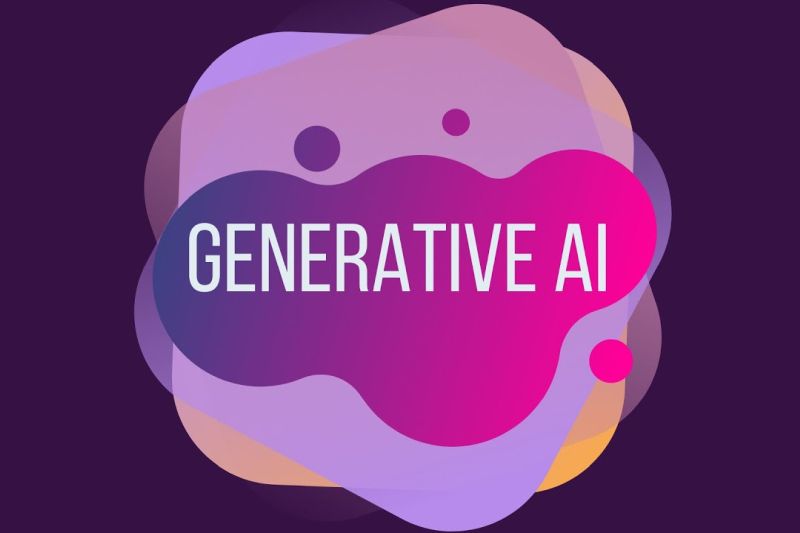After ChatGPT’s stellar rise, generative AI (GenAI) has become a technological phenomenon firmly on every organization’s radar. The responsibility for integrating this technology now lies with business leaders, who must realize that it is no longer a nice-to-have addition, but a necessity.
To succeed in this space, business leaders need a future-proof strategy that will accelerate end-to-end GenAI integration, enable effective change management, and enable organizations to become truly AI-capable while maximizing return on investment. However, this strategy will differ from one organization to another and even from one department to another within an organization.
Building a Roadmap for Success
The first step is to identify the problem that needs to be solved. A successful GenAI integration journey begins with identifying opportunities, or areas where the technology can best be used. These capabilities represent the “right” use cases that promise long-term impact and competitive advantage for enterprises.
This process sets a trajectory to help organizations decide whether to pursue large-scale deployments or smaller-scale experiments. Organizations can then go through a rigorous vetting process, taking into account factors such as current data state and quality, security and privacy requirements, latency, expected request volume, and infrastructure prerequisites, setting the stage for a seamless GenAI integration.
To steer this process in the right direction, special attention should be paid to forming the right team. This could include hiring new positions such as chief data officer and chief analytics officer, as well as facilitating seamless collaboration among diverse teams—bringing them together to create a robust plan to implement, scale, and deploy GenAI smartly and efficiently.
Ready-made models vs. custom models vs. fine tuning?
Each organization has specific industry knowledge, operational nuances, and a treasure trove of data such as customer interactions, financial transactions, progress reports, sales history, compliance activities, and more. To accurately reflect all these subtleties, they need a model that is tailored to their specific needs and effectively solves their problems.
In the early stages, many organizations use “off-the-shelf models,” or basic GenAI models that provide speed but lack control and customization because these models cannot adapt to a unique business context. Another option is to create your own or proprietary models from scratch. However, such work is time-consuming, expensive, and resource-intensive, making it impractical for many organizations.
Given these limitations, fine-tuning is the best option for maximizing the value and impact of AI models. Fine-tuning allows organizations to customize pre-trained models based on their own data. This process involves adjusting the parameters of the underlying model to better suit the unique characteristics and nuances of the organization.
In addition, it provides greater flexibility in selecting, improving and seamlessly switching models based on continuous monitoring and evaluation. At its core, it’s about doing more with less—organizations require significantly fewer models, balancing personalization, cost-effectiveness, and efficiency.
Over the long term, organizations that customize their models within their unique ecosystem will achieve the highest levels of differentiation and ROI.
Mitigating Risks: Responsibly Integrating GenAI
To truly optimize the value of GenAI initiatives, organizations must proactively mitigate potential risks. A thoughtful strategy is needed to address issues related to privacy, fairness, bias, and reliability. The most important task is to ensure the confidentiality of customer data. In this context, obtaining clear consent from clients to collect and process their data for model training purposes is of paramount importance.
Another risk is ensuring that GenAI models can predict and proactively address biases, not generate misleading or false information, and produce fair results. Additionally, additional challenges arise in ensuring that the model is reliable, valid, and consistent with the organization’s policies and goals.
For example, if a model is trained on biased or incomplete data, it may generate product descriptions that distort product characteristics, resulting in a discrepancy between customer expectations and the actual product. This inconsistency can undermine customer confidence as the information generated may not correspond to the actual state of the products, potentially impacting purchasing decisions and the overall customer experience.
To combat these risks, a comprehensive review process is required to identify and correct any biased, inaccurate or unfair content before it reaches customers or stakeholders. For successful integration, company leaders must set their course by adopting and implementing industry best practices to ensure safe and ethical implementation.
A holistic framework for creating use cases and impact
Business leaders must invest in a holistic structure that ensures the success of their investment. They must begin by carefully assessing the timing of investments, considering workforce readiness considerations, aligning technologies, and addressing potential pitfalls. This framework should guide organizations from the start, guiding the journey from identifying relevant use cases to careful model selection, risk mitigation, and seamless integration.
The framework should help identify the right use cases, ensuring that GenAI implementation directly contributes to business goals. There are generally three broad categories of use cases in the GenAI space at the moment:
- Expanded Q&A capabilities. Enterprises can use chatbots and GenAI self-service question answering assistants to quickly search, summarize and extract insights from large documents in seconds, streamlining processes and reducing the time subject matter experts spend on repetitive tasks.
- Personalized transactions in real time. The combined capabilities of GenAI and machine learning can be used to develop use cases in areas such as customer support, field service, supply chain, retail and e-commerce – personalizing and enhancing transactions for employees, customers and stakeholders across multiple touchpoints .
- Intelligent control centers/autonomous decision making. Integrating GenAI with advanced technologies such as voice assistants, speech-to-text and robotic process automation creates an intelligent decision-making system that automates the information process and acts as the cognitive center of the organization.
Organizations must carefully consider which use case is most relevant and suits their needs.
In addition, the framework should make it easier to select optimal models, fine-tuning them according to the business context to ensure maximum adaptability and impact. Taking into account factors such as model capabilities, scalability, interoperability, cost-effectiveness and compatibility with existing systems, the framework should become a catalyst for accelerated integration. At the same time, a robust risk mitigation strategy must be woven into its fabric. This will enable organizations to overcome challenges ranging from ethical issues to security intricacies and breaches of trust. Essentially, the framework should provide a phased approach that allows for iterative implementation, ongoing monitoring, and responsible deployment.
Using this framework, business leaders can responsibly implement GenAI, overcome technical challenges, and set their organizations on track.





